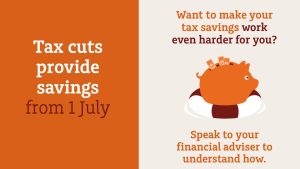Household hack 1: Clever grocery shopping
Food is one of the most fundamental aspects of a household’s budget, while its current high price is one of the biggest contributors to our country’s inflation rate spike. You might be able to cut costs by ‘savvy shopping’.
Consider buying seasonal produce as it tends to be far cheaper (you can find what is in season in the free recipe magazines at big supermarket chains), and shop later at night when that day’s fruit and vegetables may be discounted for quick sale.
But the main leverage to lower food expenditure is unit pricing. Now mandatory following years of campaigning by consumer groups, this gives the weight-for-weight, ml-for-ml or piece-for-piece cost comparison. This can help expose what are often ‘fake sales’ on smaller packages of the same product, versus buying in larger, more economical quantities.
Household hack 2: Cut-price petrol
Food might be a big part of our problematically high CPI – or consumer price index – but petrol is bigger. You can combat the supply crisis (in part caused by war in the Ukraine) by learning — and planning to refill at — your area’s cheapest bowser.
Nationally, the Australian Competition and Consumer Commission website identifies the point at which each capital city is in the petrol price cycle. Most state governments then have websites that reveal the cheaper buying opportunities.
Beyond that, there are many ways to cut fuel consumption itself, with the significant savers being to drive more sedately, minimise air conditioning use if feasible and unload any heavy sporting equipment — do you sometimes carry golf clubs around? — from the boot.
Household hack 3: Insurance savings
It is possible that you can pay less for some of your insurance cover. But it is imperative to make sure it is not a false economy and to first check that any new prospective product offers the same level of protection. Unlike most other decisions in life where you might experience ‘bargain regret,’ you do not get the chance to rethink your insurance choice: if it is too late, it is likely too late.
Check general insurance – for example, home, contents, boat, caravan, motorcycle – is fit for purpose. The insurer’s Product Disclosure Statement and Target Market Determination are the documents that will tell you.
When it comes to risk insurance, life and total and permanent disability insurance may be advisable. A special note on income protection insurance, too: It might seem expensive but it is often tax deductible and you can also lower the premiums by opting for a longer waiting period until payments commence.
And there is an insurance topic that is worth a category all of its own.
Household hack 4: Medicare Levy Surcharge strategy
From 1 July, single people on a salary of $93,000 and couples on a combined $186,000 will face what’s essentially a tax penalty if they do not hold private health insurance. Although that income threshold is slightly higher than in previous years, the penalty is up to 1.5% of your assessable income, which could potentially fund hospitals cover for you instead.
Privatehealth.gov.au is an excellent and independent government website that compares the best policies in any circumstances.
Household hack 5: Smart mortgage management
Refinancing has increased significantly as interest rates have risen, with a total of $226 billion worth of loans refinanced by Australians in the 12 months from May 2022, when the hike cycle began, to April 2023.
Borrowers are seeking to ensure they are on the best-value deal. Once again, ‘value’ for money is the key: cheap and cheerful could – ultimately – end up expensive and, well, sad.
However, besides the rate you pay, make sure you are managing your mortgage in the best possible way. Chiefly, if you have savings, consider whether these are best housed in a standalone savings account or in an offset account alongside your home loan. The interest you make in the savings account will likely be lower than your mortgage interest rate – and from the former, you will also lose tax.
Keeping money in an offset account can reduce not just your mortgage interest but also your time in debt.
Reevaluate just a few aspects of your finances this new year and you may reveal significant opportunities to save.
By Nicole Pedersen-McKinnon
Written and accurate as at: Jul 14, 2023 Current Stats & Facts







